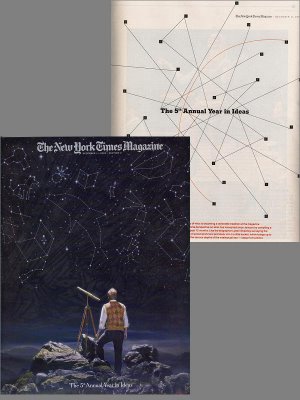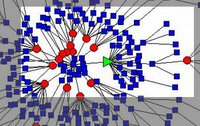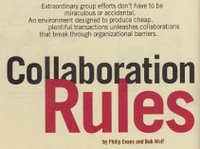A significant majority of hits on
Connectedness come from Googlers. Thanks to
Google Analytics, it's easy (and free) to summarize exactly what keywords brought them this way:

Within the subset of commonly used keywords above, notice how many are names of other people.
In my blogging practice, I have found writing about my fellow social networking enthusiasts to be beneficial on many levels. It's a good discipline to keep me informed on what's happening, and prevents me from reinventing the wheel. It's also a great way to build relationships with these esteemed colleagues, who are generally good at filtering out unwanted attention, but still appreciate concisely thought-out posts on their work. And, as the above graphic shows, name-dropping on
Connectedness attracts hits. By comparison, notice how often people find
Connectedness by Googling "Bruce Hoppe."
The problem with name-dropping is its superficiality. Or is that really a problem? The other day
David Krackhardt gave me a call and we commiserated on this question. To get the gist of our conversation, I recommend you read
Martin Kilduff and David Krackhardt's paper, "
Bringing the individual back in: A structural analysis of the internal market for reputation in organizations." The abstract includes this provocative quote:
We found, as predicted, that being perceived to have a prominent friend in an organization boosted an individual's reputation as a good performer, but that actually having such a friend ... had no effect.
Of course, as long as people know you have a prominent friend, then actually having that prominent friend doesn't hurt either. That's why I still appreciate gestures like
Steve Borgatti's link to
Connectedness from his
Managerial Network Analysis page:
 Copyright (c) 2005 Connective Associates, except where otherwise noted.
Copyright (c) 2005 Connective Associates, except where otherwise noted.
 For any of you out there doing last minute Christmas shopping, I recommend Magnetix as a fun way to unleash the inner network-builder of any kids (or kids at heart) that you know.
For any of you out there doing last minute Christmas shopping, I recommend Magnetix as a fun way to unleash the inner network-builder of any kids (or kids at heart) that you know.









